WASHINGTON -- The only four women to serve as Supreme Court justices gathered Wednesday night to celebrate Sandra Day O'Connor's pathbreaking arrival on the bench three decades ago.
O'Connor, who retired in January 2006, was joined at the Newseum by sitting justices Ruth Bader Ginsburg, Sonia Sotomayor and Elena Kagan for a wide-ranging panel discussion extending from the impact of O'Connor's nomination on the other three women to the state of the court today.
President Ronald Reagan, fulfilling a campaign promise to put a woman on the high court, nominated O'Connor in July 1981, when she was serving in relative obscurity as a state judge on an intermediate appeals court in Arizona. The Senate unanimously confirmed her nomination that September.
"It's all right to be the first to do something, but I certainly didn't want to be the last woman on the Supreme Court," O'Connor said, reflecting on the responsibility she felt as the lone representative of her sex among the nine justices.
Of course, she was not the last woman, and the other three justices on stage recalled where they were when they heard the news that O'Connor, now 82, broke the court's glass ceiling.
"It was a moment that one of those few in life where you remember exactly where you were and how you felt," said Ginsburg, who had established herself by the 1970s as the premiere champion of gender equality in cases before the Supreme Court. "I was driving home, turned on the news and the news was Sandra Day O'Connor," Ginsburg remembered. "I was about to cheer, but no one would hear me," she said.
Still, Ginsburg said she had to do some research to find out who this "great lady" was.
"I certainly wasn't well known in the judicial community of the nation," O'Connor said.
Sotomayor was only two years out of law school and working in the New York District Attorney's office when she heard the news. "I remember having conversations at lunchtime talking about how long it would take for a woman to be appointed to the Supreme Court," she said. "There were bets being taken whether it would happen in our lifetime or not." When O'Connor broke the barrier, Sotomayor said it was "an inspiration to think that more could come and that opportunities for us could grow."
Like Sotomayor, Kagan is a generation younger than O'Connor and Ginsburg and was in a position to see the first female justice as a role model for her future career. "I had just graduated from college, and I remember the announcement and I thought, 'What a stunning thing.'"
As a law clerk to Justice Thurgood Marshall from 1988 to 1989, Kagan said she found O'Connor to be a "formidable person" committed to fostering a warm community with such niceties as a morning exercise group O'Connor founded for women clerks. "I failed to come to the exercise group," said Kagan, who preferred basketball. When O'Connor saw Kagan hobbling down the hall on crutches after a basketball-related injury, the justice told her, "it wouldn't have happened in exercise class."
Beyond jokes, the women also discussed the deteriorating nomination process for federal judges. "At the time I went on," O'Connor said, "it was expected that whoever was the incumbent president would fill a vacancy on the court. If she didn't have horns and look too frightening, they'd confirm the nomination."
Although the Senate's rejection of Robert Bork in 1987 may have broken that expectation, Ginsburg said of her 1993 confirmation that she "was the beneficiary of the Senate Judiciary Committee's embarrassment" over Justice Clarence Thomas' nomination hearings in two years earlier. The Thomas hearings, which ended in a 52-48 vote to confirm him, brought out a potent mix of racial, gender, and partisan politics after Anita Hill stepped forward with accusations that Thomas had sexually harassed her.
Neither Sotomayor nor Kagan, both nominated by President Barack Obama, received the broad bipartisan support enjoyed by their fellow female justices, and Sotomayor referred to the process now as "role-playing in front of the cameras."
"It's just a shame that it's come to a pass," Kagan said, that "Republicans feel they can't vote for the nominees of Democratic presidents and vice-versa."
The justices said they were thankful that civility prevails at the court, even as it has broken down in the other branches of government. "There was a time when the Senate was known as a gentlemen's club, when there was a great deal of cordiality, and that has gotten lost," Ginsburg said.
Not that a "gentleman's club" necessarily leads to cordiality. Sotomayor told the audience that she had recently asked Ginsburg why the court was more civil today than mid-century, when the justices' tensions would result in conference room fistfights and front-page power struggles. "It's because we've had women," Sotomayor said, breaking into laughter as she relayed Ginsburg's answer.
O'Connor was the lone woman on the bench for 12 terms before President Bill Clinton appointed Ginsburg. Ginsburg, too, would be the only female for the three and a half years from O'Connor's retirement to Sotomayor's arrival in 2009. Justice Elena Kagan's confirmation in 2010 brought the number of active female members to an unprecedented one-third of the current court.
O'Connor nevertheless made it clear that three out of nine -- or four of the 112 total justices in more than 200 years -- is hardly good enough. "Maybe you haven't noticed, but I think about 51 or 52 percent of the population are females," O'Connor said, shouting the final word. "And I think they notice when their public bodies are dominated entirely by one sex. I think women care about that and they should. I really think that's part of the deal."